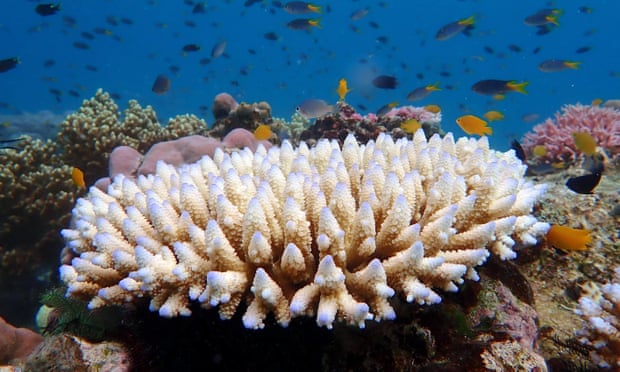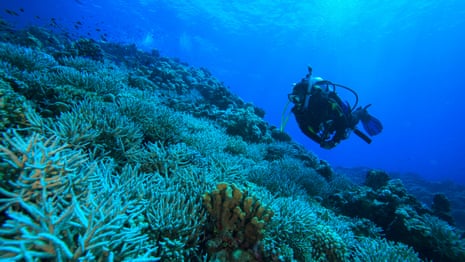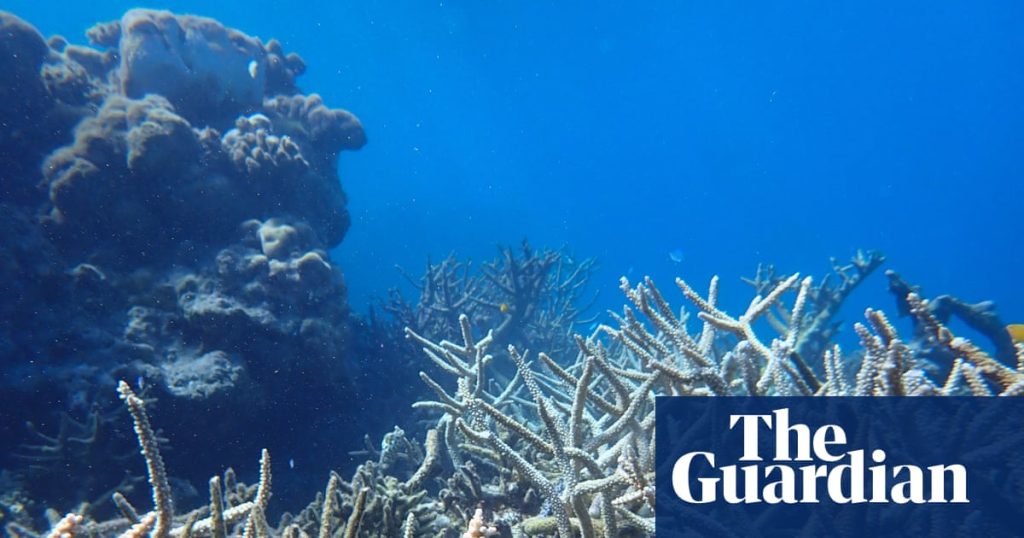The “longest, largest and most intense” marine heatwave ever recorded in Western Australia has killed coral throughout an area that stretches 1,500km, according to state and federal scientists.
More than 100 scientists and marine managers will gather in Perth on Tuesday for a special meeting to discuss the devastating event that bleached and killed corals on remote reefs earlier this year.
The marine heatwave that hit reefs from the World Heritage-listed Ningaloo to the remote Ashmore Reef left many scientists shocked.
Sign up: AU Breaking News email
A group of scientists from state and federal government departments, agencies and universities, who monitor coral bleaching in Western Australia, will issue a detailed update on Tuesday.
The heatwave, which started to build off the north-western WA coast in August 2024, caused heat stress in corals across the state’s northern reefs that lasted until May this year in “the most severe coral bleaching on record for Western Australian coral reefs,” the update said.
What is coral bleaching?
Show

Coral bleaching describes a process whereby the coral animal expels the algae that live in its tissues and give it its colour and much of its nutrients.
Without its algae, a coral’s white skeleton can be seen through its translucent flesh, giving off a bleached appearance.
Mass coral bleaching over large areas, first noticed in the 1980s around the Caribbean, is caused by rising ocean temperatures.
Some corals also display fluorescent colours under stress when they release a pigment that filters light. Sunlight also plays a role in triggering bleaching.
Corals can survive bleaching if temperatures are not too extreme or prolonged. But extreme marine heatwaves can kill corals outright.
Coral bleaching can also have sub-lethal effects, including increased susceptibility to disease and reduced rates of growth and reproduction.
Scientists say the gaps between bleaching events are becoming too short to allow reefs to recover.
Coral reefs are considered one of the planet’s ecosystems most at risk from global heating. Reefs support fisheries that feed hundreds of millions of people, as well as supporting major tourism industries.
The world’s biggest coral reef system – Australia’s Great Barrier Reef – has suffered seven mass bleaching events since 1998, of which five were in the past decade.
Thank you for your feedback.
Dr James Gilmour, a senior research scientist at the Australian Institute of Marine Science that coordinates the monitoring group, said on some coral reefs that were inspected, more than 90% of corals had either bleached or died.
“When you have more than about 75% of corals that have bleached or died, it can be very hard to find any healthy corals,” he said.
The update from the WA Coral Bleaching Group said the amount of bleaching and coral death on reefs ranged from medium (11%- 30%) to extreme (greater than 90%) across systems up to 1,500km apart.
The worst-hit area was the Rowley Shoals, Gilmour said – a group of three remote reefs that had previously escaped the effects of global heating and had been a “hope spot” for many scientists.
“The first time reefs bleach badly, the mortality tends to be quite high,” he said.
Throughout the heatwave, scientists were monitoring a metric over reefs known as Degree Heating Weeks – a measure of accumulated heat stress.
Gilmour said as a general rule, 8DHWs is high enough to cause some corals to die. During the marine heatwave, most WA reefs from Ningaloo north reached at least 15 DHWs, with some reefs off the Pilbara coast hitting 30DHWs.
“At pretty much all of these reefs, it was the highest heat stress ever recorded,” he said.
The marine heatwave in WA coincided with the most widespread global bleaching event on record that started in January 2023 and is ongoing. More than 80% of the planet’s reefs have seen heat stress high enough to cause corals to bleach.
Sign up to Breaking News Australia
Get the most important news as it breaks
Privacy Notice: Newsletters may contain info about charities, online ads, and content funded by outside parties. For more information see our Privacy Policy. We use Google reCaptcha to protect our website and the Google Privacy Policy and Terms of Service apply.
after newsletter promotion

Previous marine heatwaves in WA have been associated with La Niña patterns of ocean heat in the Pacific that see warmer waters pulled south by a current that sweeps down the coast.
This extreme marine heatwave in WA happened in the absence of a La Niña.
“We still got this dramatic warming, so we are only left with climate change [as a cause] after that,” said Dr Alistair Hobday, a marine heatwave expert at the CSIRO.
Dr Claire Spillman, a member of the bleaching group from the Bureau of Meteorology, said the summer of late 2024 and early 2025 recorded the warmest ocean temperatures for the Australian region on a record going back to 1900.
“The increased frequency of extreme and record-breaking ocean temperatures is associated with global warming,” she said.
The WA coral bleaching played out at the same time as significant bleaching was also hitting the Great Barrier Reef on the east coast. Scientists there have recorded the biggest annual drops in coral cover
“Climate change is driving these events, which are becoming more frequent, more intense and more widespread, giving our amazing, valuable coral reefs little time to recover,” Gilmour said. “And they need 10 to 15 years to recover fully.
“The key to helping coral reefs survive under climate change is to reduce greenhouse gas emissions.”

